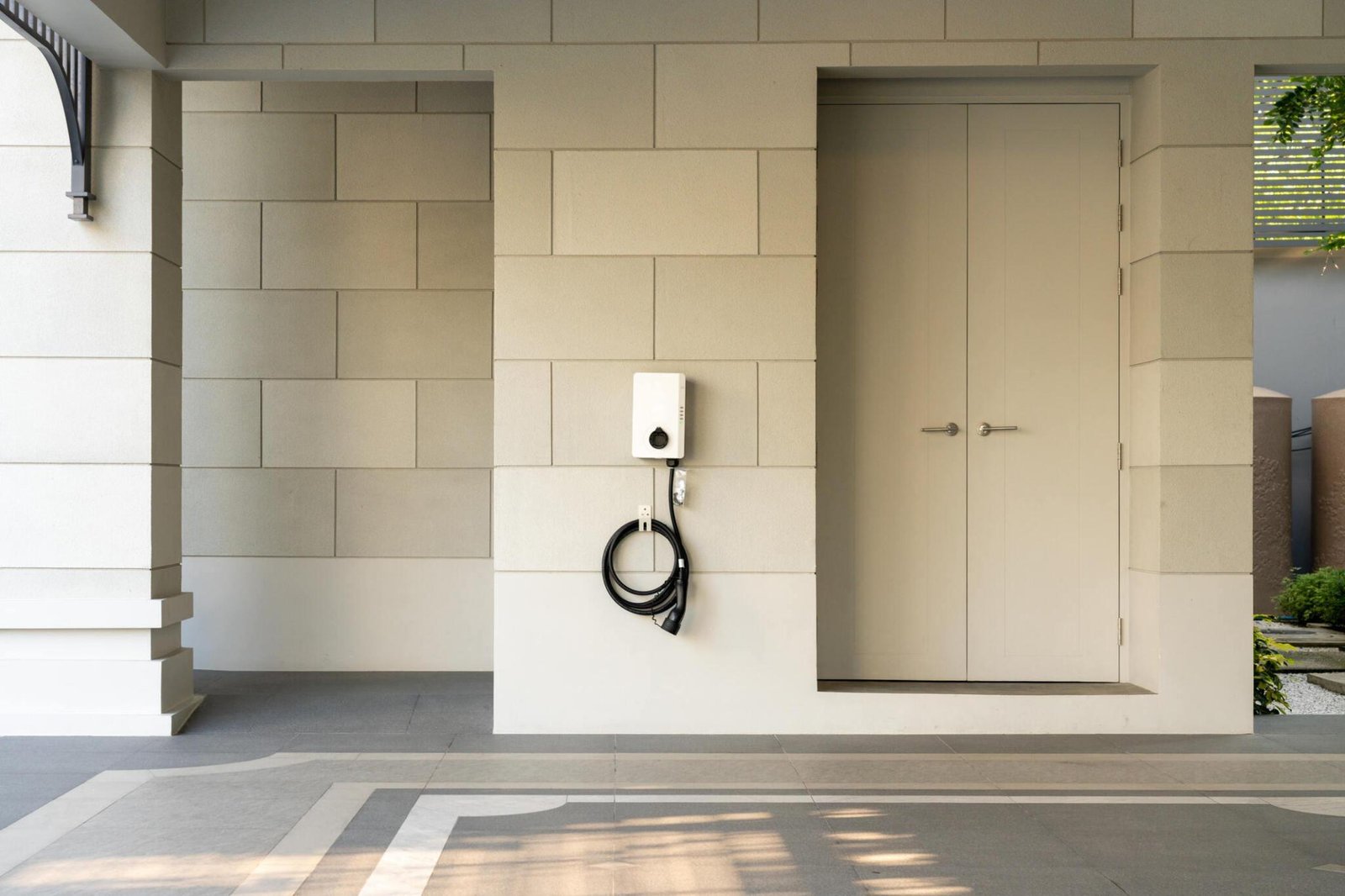In the realm of energy consumption and electricity, terms like kW and kWh are frequently used but often misunderstood. It’s essential to grasp the distinction between these two units to better manage energy usage and comprehend utility bills effectively. This guide aims to demystify the difference between kW (kilowatt) and kWh (kilowatt-hour), shedding light on their significance and practical applications.
What is a Kilowatt (kW)?
Definition and Measurement
A kilowatt (kW) is a unit of power, representing the rate at which energy is consumed or generated. It measures the amount of energy transferred or converted per unit of time, with one kilowatt equivalent to 1,000 watts. In simpler terms, it signifies the rate at which electrical energy is produced or consumed at any given moment.
What is a Kilowatt-Hour (kWh)?
Definition and Measurement
A kilowatt-hour (kWh) is a unit of energy, representing the total amount of energy consumed or produced over a specific period. It is the product of power (kW) multiplied by time (hours), indicating the cumulative energy usage or production.
Practical Examples
Continuing with the example of the microwave oven, if the appliance is used for one hour, it consumes 1 kilowatt of power. Therefore, the energy consumption for that hour would be 1 kilowatt-hour (1 kW x 1 hour = 1 kWh).
Key Differences Between kW and kWh
Nature of Measurement
- kW: Measures power, representing the rate of energy consumption or generation at a given moment.
- kWh: Measures energy, indicating the total amount of electricity consumed or produced over time.
Usage in Utility Billing
- kW: Not directly used in utility billing but crucial for assessing power requirements.
- kWh: Directly used in utility billing to determine energy usage and calculate charges.
Practical Applications
- kW: Used to assess the power demands of electrical devices and appliances.
- kWh: Used to quantify total energy consumption over a specific period, such as a billing cycle.
Calculating kW and kWh: A Step-by-Step Guide
Calculating the power (kW) and energy consumption (kWh) of household appliances is straightforward once you understand the basic principles.
Here’s a simple tutorial to guide you through the process:
Step 1: Determine the Power Rating (kW) of the Appliance
The power rating of an appliance is typically listed on its label or in the user manual. It’s measured in kilowatts (kW) and indicates the rate at which the appliance consumes energy when operating.
Step 2: Determine the Operating Time
Next, determine how long the appliance will be running. This could be in hours, minutes, or even seconds, depending on your calculation needs.
Step 3: Calculate Power (kW)
To calculate the power (kW) of an appliance, use the formula:
Power (kW) = Power Rating (Watts) 1000
Power (kW) = 1000 Power Rating (Watts)
If the power rating is already in kilowatts, you can skip this step.
Step 4: Calculate Energy Consumption (kWh)
To calculate the energy consumption (kWh) of an appliance, use the formula:
Energy Consumption (kWh) = Power (kW) × Operating Time (hours) Energy Consumption (kWh) = Power (kW) × Operating Time (hours)
Explanation of the difference between kW and kWh
Kilowatts (kW) and kilowatt-hours (kWh) are both units used to measure electricity, but they represent different aspects of it.
Kilowatts (kW) is a measure of power, which is the rate at which electricity is consumed or produced. It represents the amount of electricity being used or generated at any given moment. For example, a light bulb may have a power rating of 60 watts, which is equal to 0.06 kilowatts. This means that when the light bulb is turned on, it consumes electricity at a rate of 0.06 kilowatts.
On the other hand, kilowatt-hours (kWh) is a measure of energy, specifically the amount of electricity consumed or produced over time. It takes into account both the power (in kilowatts) and the duration of usage. For example, if a 60-watt light bulb is left on for an hour, it would consume 0.06 kilowatts multiplied by 1 hour, resulting in 0.06 kilowatt-hours of energy used.
In simple terms, kW measures the instantaneous power usage or generation, while kWh measures the total amount of energy consumed or produced over some time. kW indicates the rate at which electricity is being used, while kWh indicates the total quantity of electricity used. It is important to understand this difference to properly monitor and manage electricity consumption.
Importance in Energy Management
Understanding kilowatts is crucial for assessing the power requirements of electrical devices and appliances. It enables consumers to gauge the energy consumption of various devices and make informed decisions regarding their usage to optimize efficiency and minimize costs.
Importance of understanding these units in relation to energy consumption and costs
Understanding the units of kilowatts (kW) and kilowatt-hours (kWh) is of critical importance when it comes to understanding energy consumption and costs. kWh is a unit that measures energy usage over a period of time, commonly used for billing purposes. On the other hand, kW measures the rate at which energy is being used at any given moment. By understanding the difference between these two units, individuals and businesses can accurately assess their energy needs, monitor their energy usage, and ultimately make informed decisions to optimize energy consumption and reduce costs.
For example, knowing the difference between kW and kWh can help determine the appropriate size of electrical appliances or equipment, as well as assess the impact of running them for a certain length of time. Additionally, it allows for better understanding of electricity bills and enables consumers to choose energy-efficient products or implement energy-saving measures to reduce overall consumption and expenses. Overall, comprehending the distinction between kW and kWh is essential for effective energy management and cost control.
Basics of Power
Power is a fundamental concept in physics and engineering that measures the rate at which energy is generated or used. It quantifies how quickly work can be done or how quickly energy can be transferred. Power can be measured in various units, including watts (W), kilo-watts (kW), mega-watts (MW), and giga-watts (GW).
The most basic unit of power is the watt, which is defined as one joule of energy transferred per second. This means that one watt represents the transfer of one joule of energy in one second. For larger quantities of power, prefixes are used. For example, one kilo-watt is equal to 1,000 watts, one mega-watt is equal to one million watts, and one giga-watt is equal to one billion watts.
Average power is a concept that represents the power used or generated over a specific period of time. It is calculated by dividing the total energy used or generated by the time taken. For example, if a device consumes 1,000 joules of energy in 10 seconds, the average power would be 100 watts.
In summary, power is the measurement of how quickly energy is generated or used. It is expressed in units such as joules per second, watts, and kilo-watts. Average power represents the power used or generated over a specific period of time and is calculated by dividing the total energy by the time taken.
Definition of power
Power is defined as the rate at which work is done or the rate at which energy is transferred. It is a fundamental concept in physics and is measured in units called watts (W). One watt is equal to one joule of energy transferred per second. Power can also be expressed in larger units such as kilowatts (kW), megawatts (MW), and gigawatts (GW), where one kilowatt is equal to 1,000 watts, one megawatt is equal to 1,000 kilowatts, and one gigawatt is equal to 1,000 megawatts.
Power is an essential measurement when dealing with energy consumption. When we talk about average power, we are referring to the average rate at which energy is used over a certain period of time. It represents the energy consumed per unit of time, which is crucial in understanding and comparing energy usage. For example, the average power consumption of a household can give us an idea of how much energy is being used on a daily or monthly basis.
Understanding the difference between kilowatts (kW) and kilowatt-hours (kWh) is important. Kilowatts refer to the rate at which power is being used at any given moment, while kilowatt-hours represent the total amount of energy consumed over a specific time period. In other words, kilowatts measure power, while kilowatt-hours measure energy.
Unit of power: watt (W)
The unit of power known as a watt (W) is a fundamental concept in the field of energy. In physics, power is defined as the rate at which energy is consumed or produced. The watt is specifically used to measure the power output of electrical devices.
When we talk about power, we are referring to the amount of energy consumed or produced in a given period of time. The watt is a measurement unit that quantifies this power. For instance, a 100-watt light bulb consumes 100 watts of power, meaning it consumes 100 joules of energy every second. On the other hand, a 200-watt solar panel produces 200 watts of power, meaning it generates 200 joules of energy every second.
The watt is an indispensable unit for measuring the power output of electrical devices. It allows us to understand how much energy is being consumed or produced in a specific timeframe, thereby aiding in efficiency analysis and energy management. Whether we are talking about small household appliances or large industrial machinery, the watt is a reliable metric to evaluate their power usage.
In conclusion, the watt is a unit of power that measures energy consumption or production. It is widely utilized to determine the power output of electrical devices, providing valuable insights into energy usage and efficiency.
Relationship between power, current, and voltage
In order to understand the difference between kilowatts (kW) and kilowatt-hours (kWh), it is essential to grasp the relationship between power, current, and voltage. Power refers to the rate at which electricity is consumed or generated, and is measured in watts (W). It can also be expressed as kilowatts (kW), where 1 kW is equivalent to 1,000 watts. Current, on the other hand, describes the flow of electric charge in a circuit and is measured in amperes (A). Meanwhile, voltage represents the electrical potential difference or the force that drives the flow of electrons and is measured in volts (V). These three fundamental components – power, current, and voltage – are interconnected through various mathematical formulas and principles, forming the basis for understanding electrical systems and energy consumption.
Power Rating
Power rating refers to the amount of power consumed or produced by a device or appliance. It is an important consideration when understanding the energy requirements of various devices and their efficiency levels. Power rating is measured to determine the rate at which a device can convert energy, either from electrical to mechanical or vice versa.
Power rating is commonly measured in units of watts (W), which is the standard unit for power. One watt is equal to one joule of energy transferred per second. In some cases, larger units such as kilowatts (kW) or megawatts (MW) are used for measuring power rating to indicate higher levels of power.
Examples of power rating for different devices and appliances vary widely. For example, a typical laptop may have a power rating of around 50-100 watts. Larger household appliances like refrigerators or air conditioners can have power ratings in the range of 200-1500 watts. In the industrial sector, power ratings can reach much higher levels, from several kilowatts to several megawatts for machines and equipment.
Understanding power rating allows consumers and manufacturers to make informed decisions regarding the energy consumption and efficiency of devices and appliances. By knowing the power rating, users can estimate the energy usage and cost, plan electrical load requirements, and identify the most energy-efficient options for their needs.
Definition of power rating
The power rating, also known as the power output or power capacity, is a measure that defines the maximum amount of power that a device or system can handle or produce. It indicates the rate at which work is done or energy is transferred. The power rating is crucial in determining the suitability and efficiency of various appliances, machinery, and electrical systems.
Power ratings are measured in watts (W), which represent the level of electrical power consumed or generated per unit of time. A watt is equivalent to one joule of energy expended or produced per second. However, power ratings can also be expressed in larger units such as kilowatts (kW), mega-watts (MW), and giga-watts (GW) for larger-scale applications and power grids.
The prefix “kilo” denotes a factor of 1,000, so 1 kilowatt is equal to 1,000 watts. Mega-watts are a million watts, and giga-watts are a billion watts. These larger units are used to measure power ratings for industrial plants, power stations, and other high-power-consuming sites.
It is important to note that power ratings can change rapidly for devices or loads that turn on and off. While the power rating typically indicates the maximum power capacity, the actual power consumption may vary depending on the operating conditions and load demand. Therefore, it is essential to consider both the power rating and the energy consumption, measured in kilowatt-hours (kWh), to accurately assess the efficiency and cost of using different devices or systems.
The Role of kW and kWh in Energy Efficiency
Understanding and monitoring kilowatts (kW) and kilowatt-hours (kWh) play a crucial role in promoting energy efficiency. By grasping these concepts, individuals can make informed decisions that lead to reduced energy consumption, lower utility bills, and a smaller environmental footprint. Let’s explore how kW and kWh contribute to energy efficiency and discuss strategies for reducing kWh usage in homes:
Strategies for Reducing kWh Usage:
Energy-Efficient Appliances: Invest in ENERGY STAR-rated appliances, which are designed to consume less energy without sacrificing performance. These appliances often have lower kW ratings and use innovative technologies to minimize kWh usage.
Behavior Changes: Adopt energy-saving habits such as turning off lights and unplugging electronics when not in use, using power strips to easily switch off multiple devices, and optimizing appliance settings for efficiency (e.g., using cold water for laundry).
Home Improvements: Consider implementing home improvements to enhance energy efficiency, such as adding insulation to reduce heating and cooling demands, sealing air leaks to prevent energy loss, upgrading to energy-efficient windows and doors, and installing programmable thermostats for better temperature control.
Renewable Energy Integration: Explore renewable energy options like solar panels or wind turbines to generate clean electricity on-site. By harnessing renewable energy sources, homeowners can reduce their reliance on grid-supplied electricity and lower their overall kWh usage.
Smart Home Technology: Embrace smart home technology, including smart thermostats, lighting systems, and appliances that can be controlled remotely or programmed to operate more efficiently. These devices help optimize energy usage by adjusting settings based on occupancy, time of day, and energy demand.
Importance of power rating for electrical devices
Power rating is a crucial factor to consider when dealing with electrical devices. It determines the amount of power the device consumes or produces, and understanding the difference between kilowatts (kW) and kilowatt-hours (kWh) is essential. While both terms are commonly used in the context of electricity, they represent distinct measurements. This article will delve into the importance of power rating for electrical devices, highlighting why it is necessary to comprehend and utilize this information when dealing with various appliances.
Importance of power rating for electrical devices:
The power rating of an electrical device is vital for multiple reasons. Firstly, it provides valuable information about the maximum amount of power the device can handle or consume. This factor plays a significant role in determining the compatibility between the device and the power supply. Understanding the power rating ensures that the device operates correctly and avoids potential malfunctions or damage due to overloading or insufficient power supply.
Secondly, the power rating helps users gauge the energy efficiency of electrical devices. Appliances with higher power ratings typically consume more electricity to perform their intended functions. This understanding allows individuals to make informed decisions when purchasing or using devices, considering their energy consumption and the associated costs. By selecting appliances with lower power ratings, users can reduce electricity consumption, save money, and contribute to sustainable energy practices.
Lastly, power ratings become crucial when calculating the power consumption or energy usage of devices over a specific period. This measurement is represented in kilowatt-hours (kWh) and signifies the total energy consumed or produced by a device in one hour. Knowing the power rating allows accurate estimation and monitoring of energy consumption, facilitating more informed energy management and potential cost savings over time.
In conclusion, the power rating of electrical devices holds significant importance in determining compatibility, assessing energy efficiency, and monitoring energy consumption. A clear understanding of power ratings, differentiating between kilowatts and kilowatt-hours, enables individuals to make informed decisions, adapt to sustainable energy practices, and effectively manage their energy usage.
Maximum Power Output
Maximum power output refers to the maximum amount of power that a device or system can generate or utilize. It is a crucial parameter that defines the capacity of a device or system to perform work or provide electricity. Power usage refers to the amount of power consumed by a device or system, whereas power generation is the amount of power produced by a device or system.
The maximum power output is determined by various factors such as the design and efficiency of the device or system, the quality and capacity of its components, and the energy source it utilizes. For instance, in the case of a power generator, the maximum power output is influenced by factors such as the size of the engine, the type of fuel used, and the efficiency of the generator’s alternator.
The connection between maximum power output and average power of a device or system lies in the way power is utilized or generated over a period of time. While maximum power output denotes the peak capability of a device or system, average power represents the average rate at which power is consumed or generated over a specific duration. The average power is generally lower than the maximum power output since devices or systems often operate at less than their maximum capacity, considering variations in the load.
Overall, understanding the concept of maximum power output is crucial to comprehend the capabilities and limitations of a device or system, as well as to make informed decisions about power usage and generation.
Definition of maximum power output
The maximum power output refers to the highest amount of power that a device or system can generate or produce. It is measured in units known as watts (W). Additionally, power can also be measured in kilo-watts (kW), mega-watts (MW), and giga-watts (GW), which are equivalent to 1,000 watts, 1 million watts, and 1 billion watts respectively.
The concept of maximum power output is closely related to the idea of loads turning on and off. When a load is turned on, it requires a certain amount of power to operate. This increases the power output of the device or system. On the other hand, when a load is turned off, the power output decreases as less power is being consumed.
A graph of power output over time typically shows swings up and down, representing the fluctuations in power demand. For example, during peak times, when multiple loads are turned on, the power output increases significantly. Conversely, during low demand periods, the power output decreases, potentially reaching zero if all loads are turned off.
In conclusion, maximum power output is the highest amount of power that can be produced by a device or system. It is measured in watts, kilo-watts, mega-watts, or giga-watts, depending on the scale. The power output fluctuates as loads turn on and off, resulting in a graph that shows swings and even times when the power output reaches zero.
Significance when selecting electrical devices
When selecting electrical devices, it is crucial to understand the significance of differentiating between kW and kWh. kW is a unit of power, which measures the rate at which energy is consumed or produced. On the other hand, kWh is a unit of energy, which measures the total amount of energy consumed over a period of time. The distinction between these two units is important in determining the efficiency and cost-effectiveness of electrical devices.
By considering the kW rating of an electrical device, one can assess the power consumed or produced by the device. This is particularly relevant when selecting devices such as generators or solar panels, where the power output is a key factor. Choosing the appropriate kW rating ensures that the device can meet the required energy demand without overloading or underutilizing the system.
Furthermore, understanding the kWh usage of electrical devices is essential for managing energy consumption and calculating electricity costs. By monitoring the energy consumption over a specific period, one can evaluate the efficiency of appliances and identify potential areas for energy savings. Additionally, knowing the kWh usage allows individuals or businesses to accurately estimate their electricity bills and allocate energy resources accordingly.
In conclusion, recognizing the distinction between kW and kWh is crucial when selecting electrical devices. By considering the power output and energy consumption of devices, individuals can ensure efficiency, cost-effectiveness, and sustainable energy management.
Watts vs. Kilowatts
Watts and kilowatts are both units of measurement used to quantify power. However, the key difference lies in their magnitude. A watt is the SI unit of power and is equivalent to one joule of energy per second. In contrast, a kilowatt is equal to one thousand watts.
The relationship between the two units lies in the fact that a kilowatt is a larger unit of power compared to a watt. This means that one kilowatt is equal to 1000 watts. Understanding the distinction between watts and kilowatts becomes important when dealing with larger quantities of power or energy.
Power is the rate at which energy is consumed or produced. It essentially indicates the amount of work done in a given amount of time. Watts and kilowatts are crucial in measuring power as they allow us to determine the rate at which energy is being converted or transferred.
Energy, on the other hand, is the capacity to do work and is commonly quantified in kilowatt-hours (kWh). The kilowatt-hour measures the total energy consumed or produced over a specific period. It can be calculated by multiplying power (in kilowatts) by time (in hours).
In summary, the difference between watts and kilowatts lies in their magnitude, with one kilowatt being equal to 1000 watts. Understanding this relationship is crucial in grasping the concepts of power and energy and their measurement in practical applications.
Conversion between watts and kilowatts
When it comes to understanding the difference between watts (W) and kilowatts (kW), it is important to grasp the concept of conversion. A kilowatt is simply a larger unit of power, where 1 kilowatt is equivalent to 1000 watts.
To convert from watts to kilowatts, one needs to divide the value in watts by 1000. For example, if you have a power rating of 5000 watts, you can convert it to kilowatts by dividing it by 1000. Thus, 5000 watts is equal to 5 kilowatts.
Conversely, to convert from kilowatts to watts, you would multiply the value in kilowatts by 1000. For instance, if you have a power rating of 3 kilowatts, you can convert it to watts by multiplying it by 1000. Hence, 3 kilowatts is equal to 3000 watts.
In summary, the conversion between watts and kilowatts involves dividing or multiplying the value by 1000, respectively. This is done because a kilowatt is 1000 times larger than a watt. By understanding this conversion, one can accurately assess and compare power values in appropriate units.
How do kW and kWh relate to batteries?
When buying batteries, you need to think about both the power of the battery and the energy storage capacity of the battery you are looking at.
The battery’s energy storage capacity is measured in kWh—for example, the ‘Powerwall 2′ stores 13.5 kWh of energy.
Its power is 5 kW, so it can charge or discharge at that rate. At full power, then, it can fully discharge in under 3 hours.
The more energy (kWh) a battery has, the more you can store and the longer it will last, the more power it has the faster you can get that energy in or out of the battery,
In other words, the more power it has, the more appliances you can power with it and the more energy it has, the longer you can power those appliances.
For normal household use, you want enough energy to get you through the night and at least 5 kW of power for speedy charging.
Top tip for filtering out the worst solar and battery salesmen: Ask them to explain the difference between a kW and kWh. If they get this wrong how on earth are they gonna understand your requirements? A lot of cold calling door knockers will fail this test in my experience.
The technical bit for those that are interested:
1 Watt is a rate of energy usage of 1 Joule every second, or 1 Joule per second (J/s).
Source: solarquotes.com.au
Conclusion
In summary, the distinction between kW and kWh lies in their measurement of power and energy, respectively. While kilowatts represent the rate of energy consumption or generation at a given moment, kilowatt-hours quantify the total energy consumed or produced over a specific period. Understanding these units is crucial for effective energy management, utility billing, and promoting sustainability in both residential and commercial settings.
FAQs (Frequently Asked Questions)
Q: How can I calculate the energy consumption of an appliance?
A: To calculate energy consumption, multiply the power rating of the appliance in kilowatts (kW) by the duration of use in hours. This will give you the total energy consumed in kilowatt-hours (kWh).
Q: Are kilowatt (kW) and kilowatt-hour (kWh) interchangeable terms?
A: No, kilowatt (kW) and kilowatt-hour (kWh) are distinct units of measurement. Kilowatts measure power, while kilowatt-hours measure energy.
Q: What factors affect energy consumption in a residential or commercial setting?
A: Several factors can influence energy consumption, including the number and efficiency of appliances, climate conditions, building insulation, and occupant behaviour.














